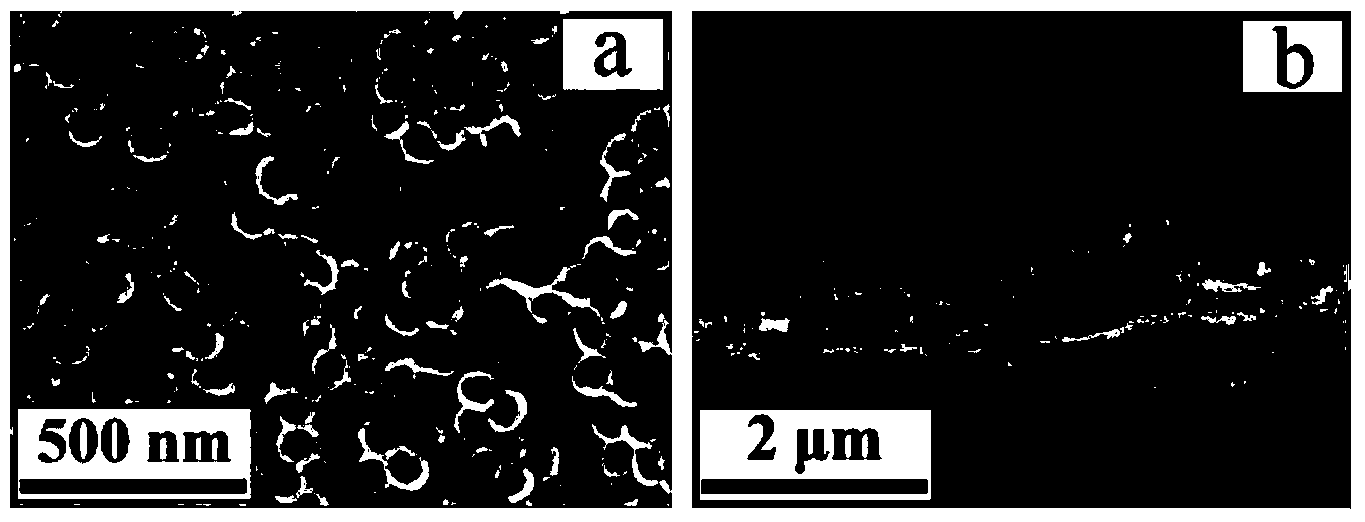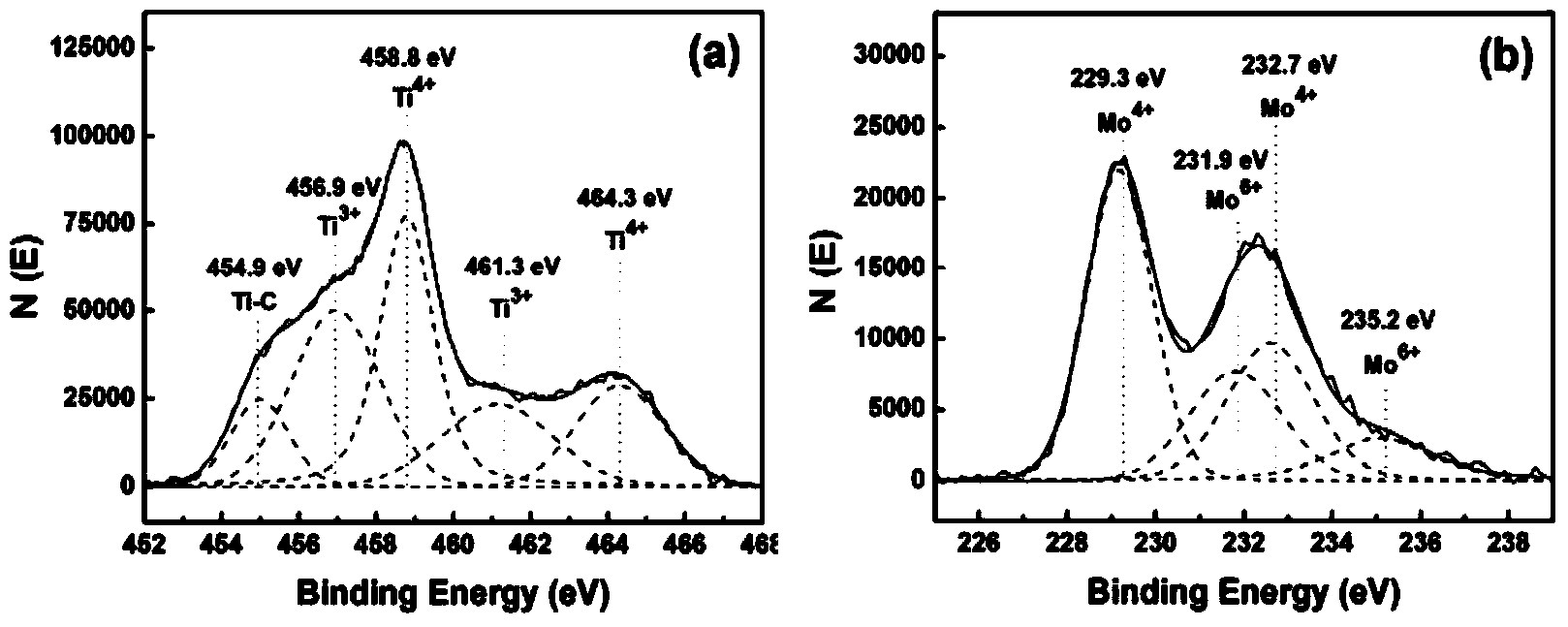Molybdenum and carbon-codoped titanium oxide nanotube array thin film material and preparation method thereof
A technology of titanium oxide nanotubes and thin film materials, applied in the fields of nanotechnology, nanotechnology, nanotechnology for materials and surface science, etc., can solve the problem that transition metal/non-metal co-doping cannot be realized and no transition is seen. Co-doped titanium oxide nanotube arrays with metal/non-metal elements
- Summary
- Abstract
- Description
- Claims
- Application Information
AI Technical Summary
Problems solved by technology
Method used
Image
Examples
Embodiment 1
[0036] The Ti-5Mo alloy was heat-treated to obtain a single-phase structure, sliced, polished, and then anodized in an ethylene glycol solution with a mass fraction of ammonium fluoride of 0.3% and a volume fraction of water of 3% at a working voltage of 30V for 2h. A titanium oxide nanotube array film with a thickness of about 2.4 μm, a tube diameter of about 80 nm, and a molybdenum-titanium atomic ratio of 0.068 was obtained. The molybdenum-containing titanium oxide nanotube array film is heat-treated in air at 500° C. for 2 hours to obtain a molybdenum-doped titanium oxide nanotube array film. The molybdenum-doped titanium oxide nanotube array film was heat-treated at 550° C. for 3 hours in a carbon monoxide atmosphere to obtain a molybdenum-carbon co-doped titanium oxide nanotube array with a carbon-titanium atomic ratio of 0.08 (see figure 1 , 2 and Table 1).
[0037] Table 1 Composition analysis results of molybdenum-carbon co-doped titania nanotube arrays
[0038] ...
Embodiment 2
[0042] The absorption spectrum of molybdenum-carbon co-doped titanium oxide nanotube array film was measured by UV-vis2550 ultraviolet-visible spectrophotometer, and compared with the undoped titanium oxide nanotube array film of the same thickness. The results show that the visible light absorption ability of molybdenum carbon co-doped titania nanotube array film is much higher than that of undoped titania nanotube array film (see image 3 ).
Embodiment 3
[0044] With an intensity of 100mW / cm 2 The simulated sunlight was used as the light source, the 0.2M sodium sulfate solution was used as the electrolyte, and the molybdenum-carbon co-doped titanium oxide nanotube array film was used as the photoanode to investigate its photoelectrochemical performance under simulated sunlight. The results show that the photocurrent density of molybdenum carbon co-doped titania nanotube array film is 400mA / cm 2 , more than 2 times higher than that of the undoped sample (see Figure 4 a).
PUM
| Property | Measurement | Unit |
|---|---|---|
| Thickness | aaaaa | aaaaa |
| Diameter | aaaaa | aaaaa |
| Strength | aaaaa | aaaaa |
Abstract
Description
Claims
Application Information
 Login to View More
Login to View More - R&D
- Intellectual Property
- Life Sciences
- Materials
- Tech Scout
- Unparalleled Data Quality
- Higher Quality Content
- 60% Fewer Hallucinations
Browse by: Latest US Patents, China's latest patents, Technical Efficacy Thesaurus, Application Domain, Technology Topic, Popular Technical Reports.
© 2025 PatSnap. All rights reserved.Legal|Privacy policy|Modern Slavery Act Transparency Statement|Sitemap|About US| Contact US: help@patsnap.com



